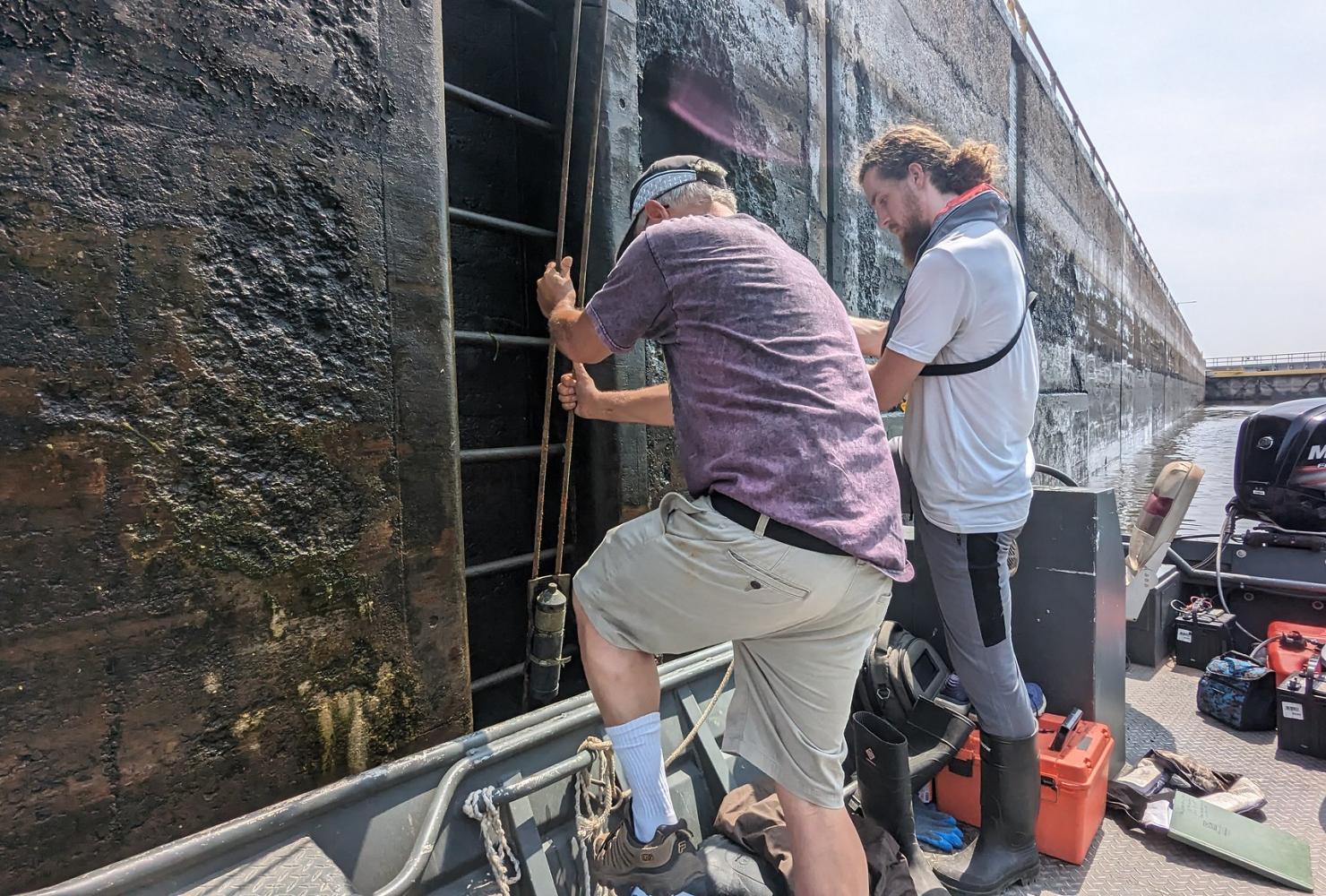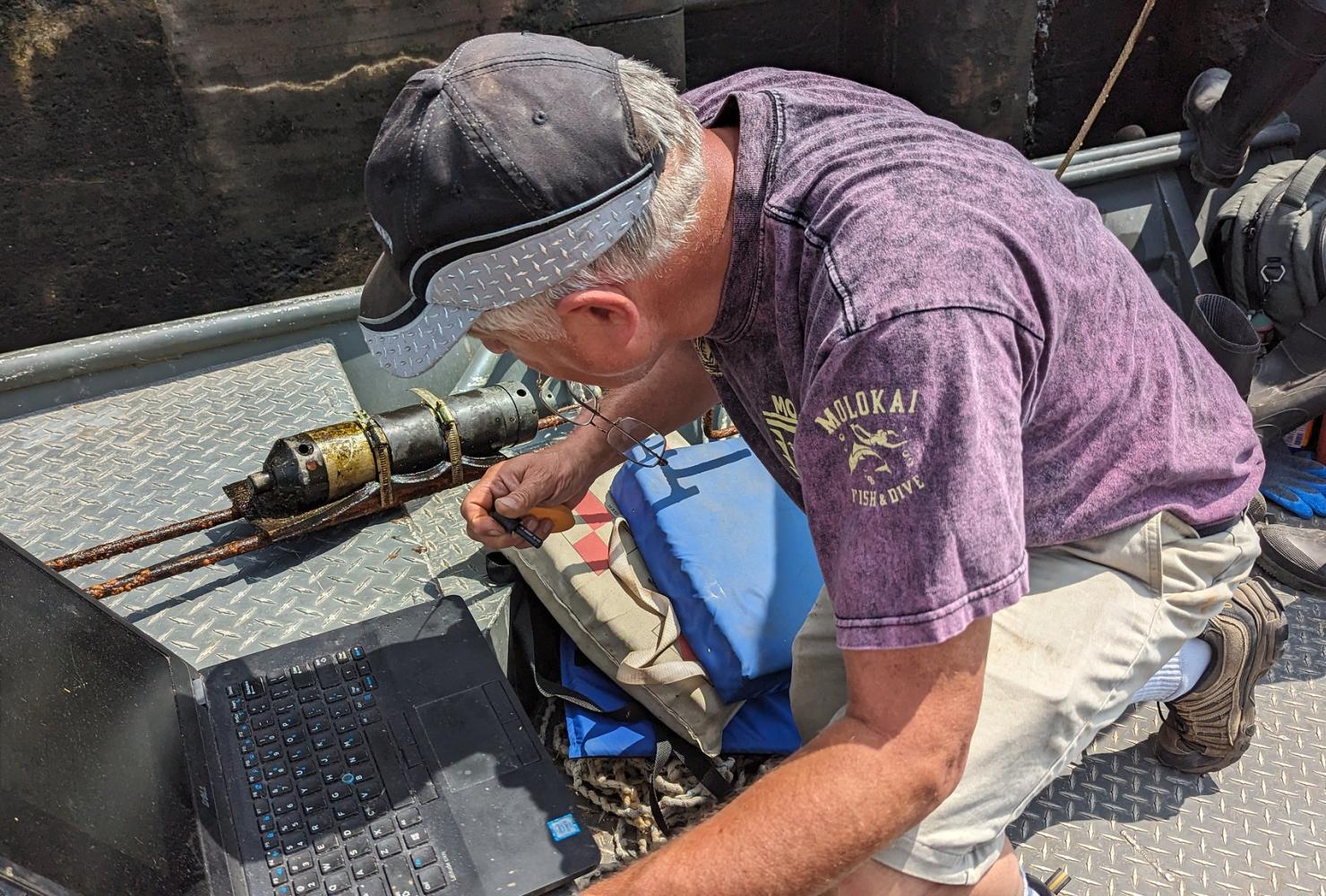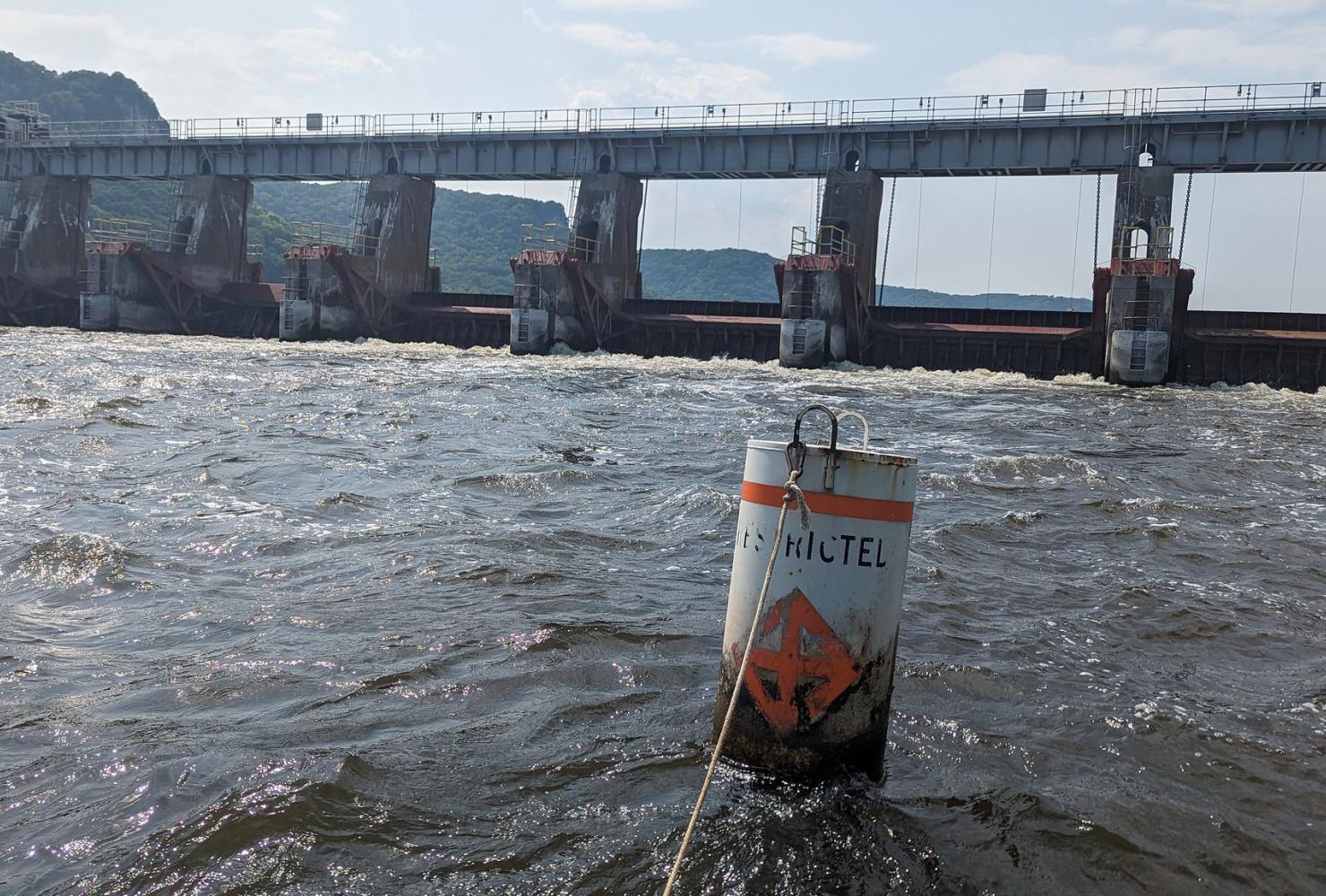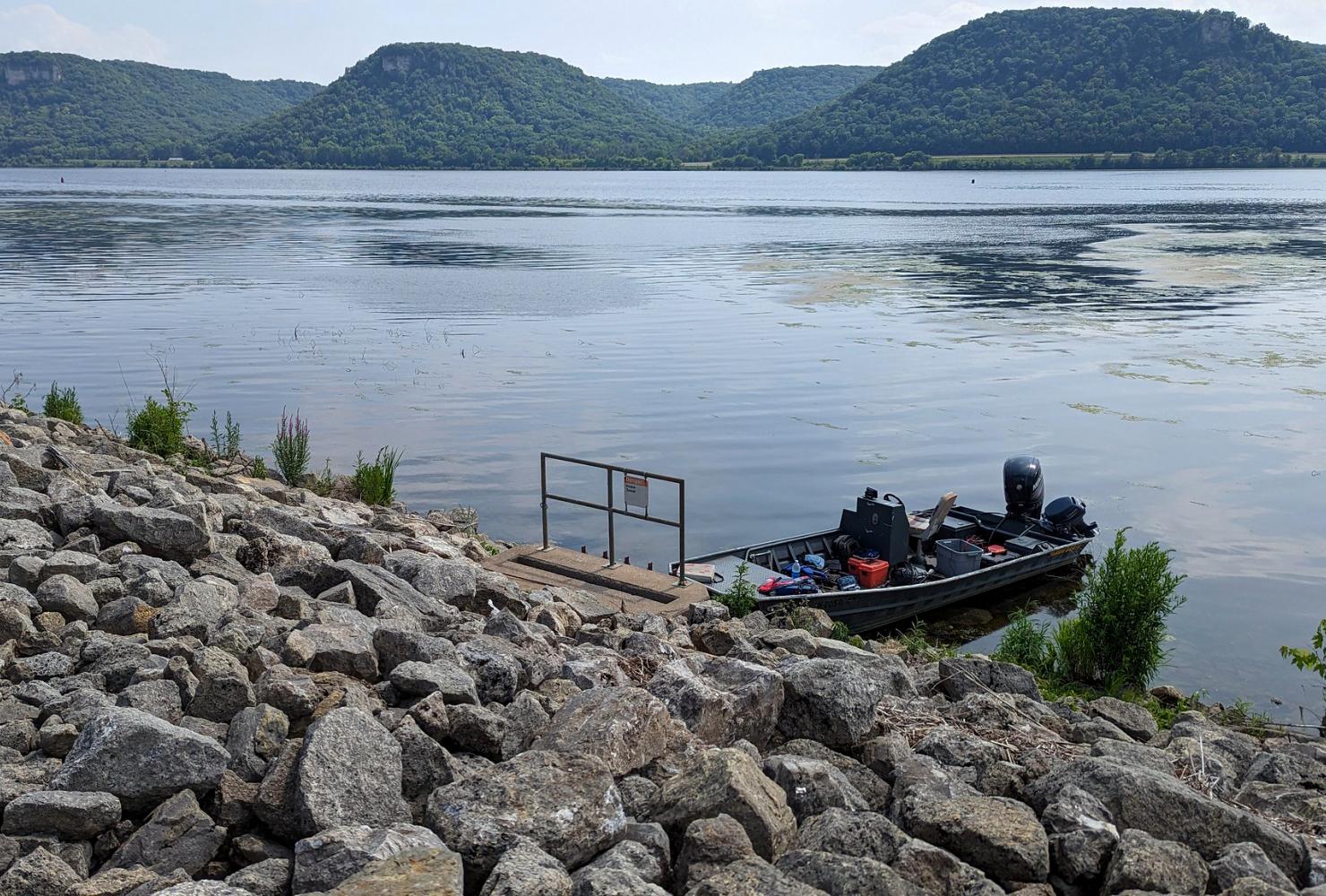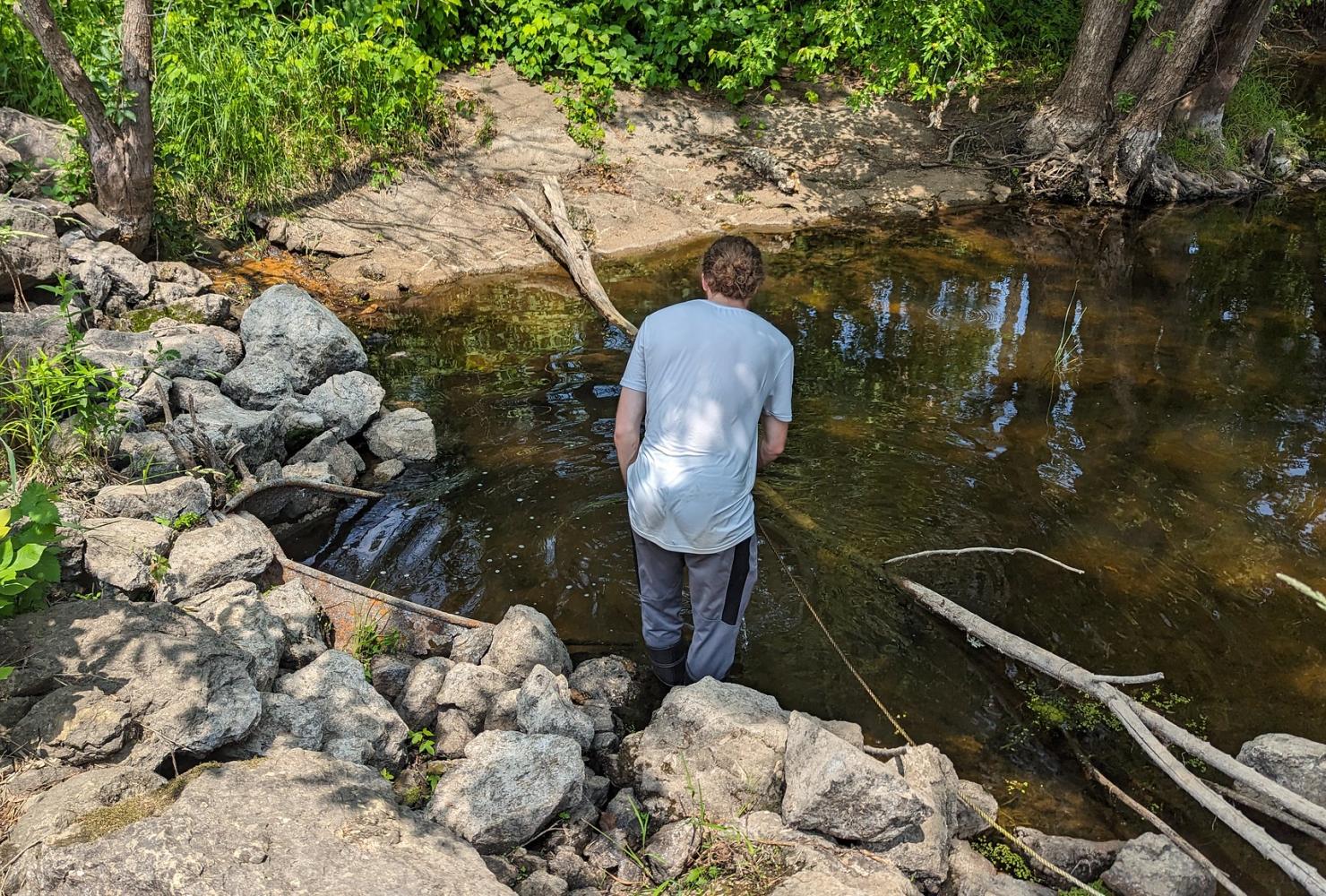What the research says about how to stop invasive carp
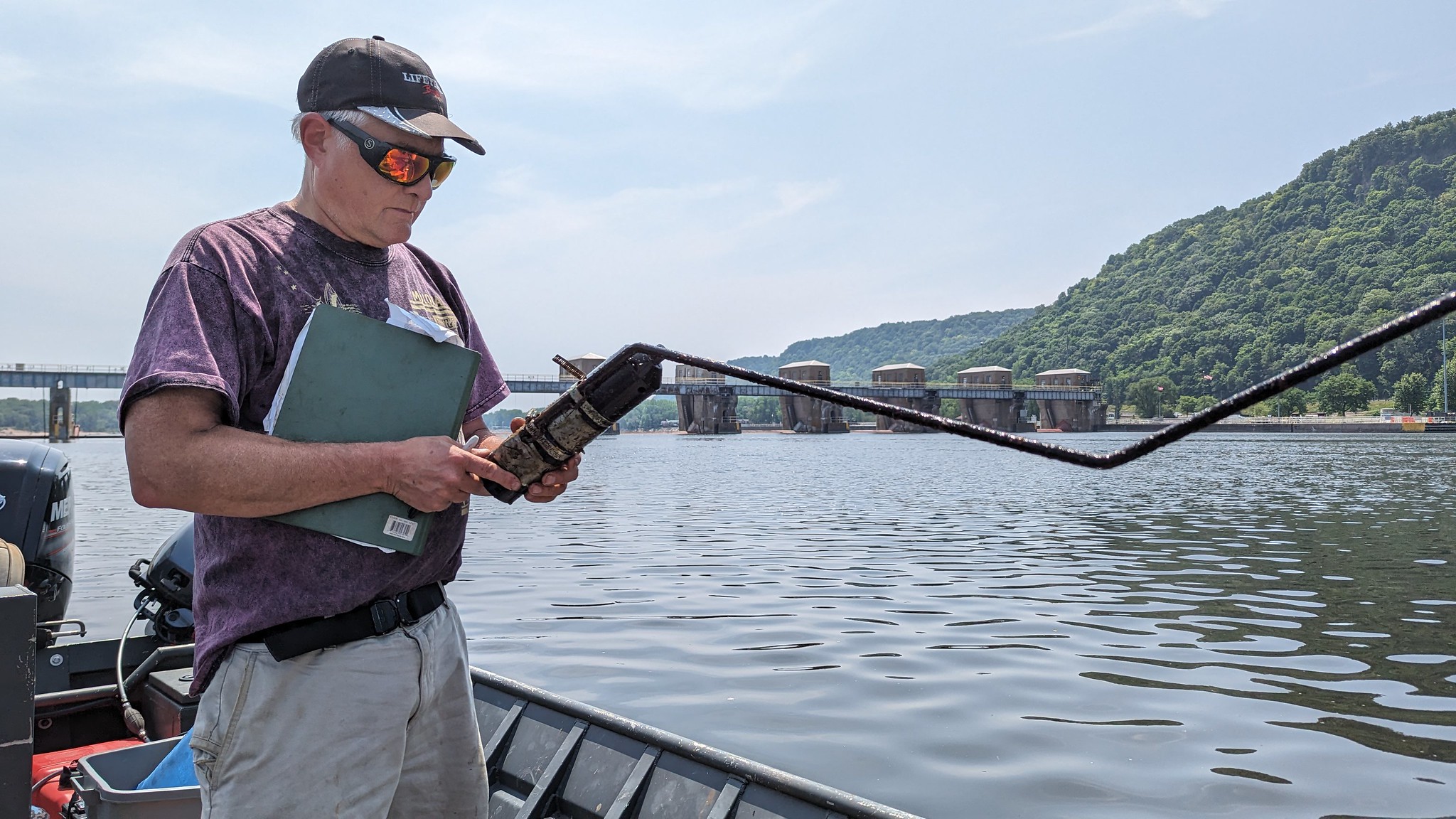
Where and how are invasive carp moving? Why do we need a bioacoustic fish fence? What about native fish? We tagged along with Dr. Peter Sorensen to the Driftless Area to get firsthand experience of the latest research.
This year, FMR and our Stop Carp Coalition partners have been lobbying state leaders to take more action to keep invasive carp from moving up the Mississippi River into Minnesota.
We’ve been especially interested in state funding for a carp deterrent system, called a bioacoustic fish fence, and other connected carp prevention efforts at Lock and Dam 5 near Winona. This multifaceted proposal represents Minnesota’s most promising option to stop invasive carp right where their largest populations in the state appear to be. (Read more about why we’re concerned about invasive carp.)
The bioacoustic fish fence proposal is the result of many years of research by biologists and engineers. To see a bit of this research firsthand, I joined Dr. Peter Sorensen for a day on the Mississippi River.
Meet Dr. Sorensen and his research
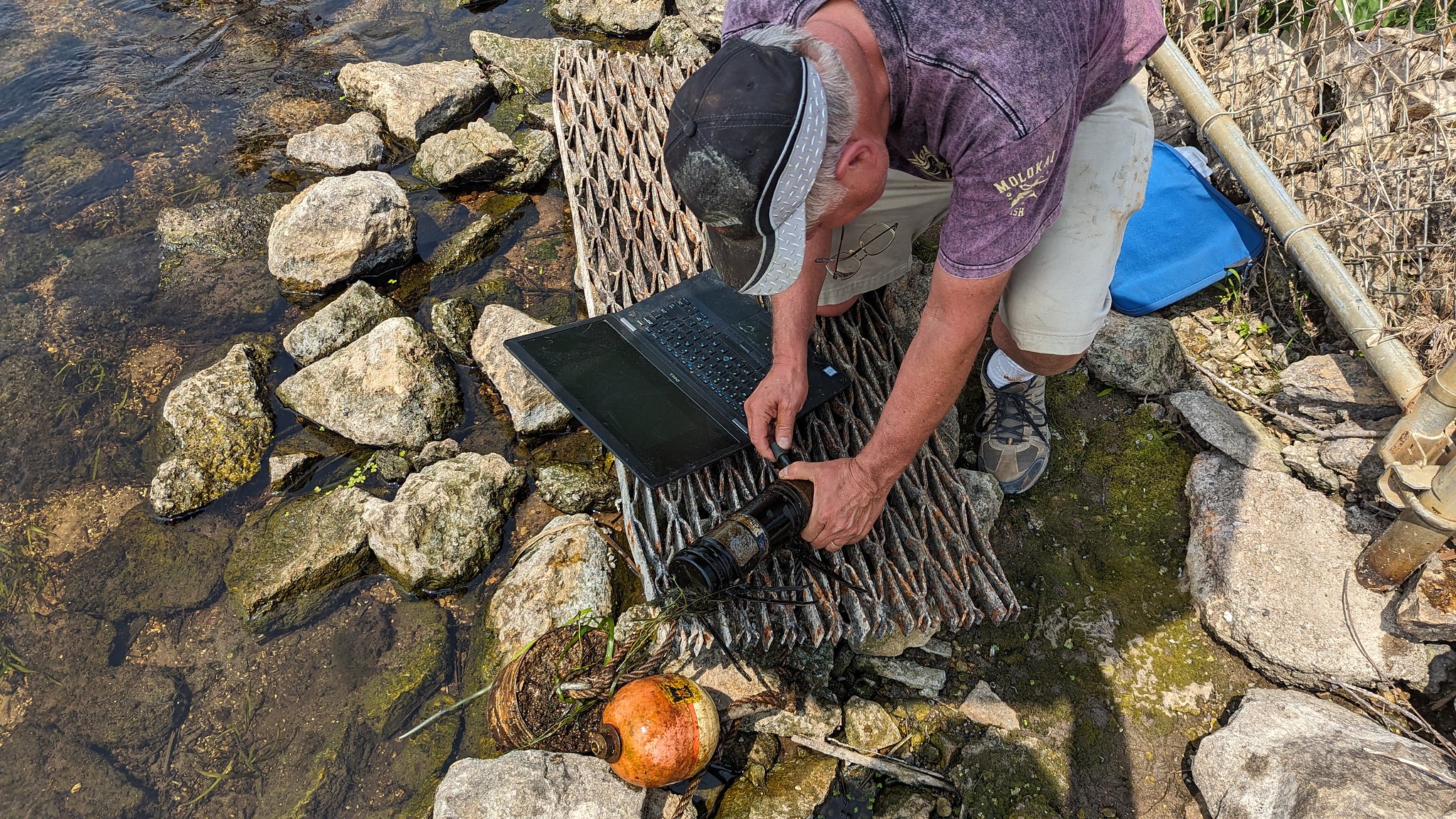
Dr. Sorensen checks a receiver that tracks fish near Lock and Dam 5.
Dr. Sorensen is wrapping up a long career in fish biology research at the University of Minnesota. He’s spent the last several years focused on invasive carp.
To stop carp migration, it’s essential to understand their movement: when, why and how they swim upstream. What seasons, water levels and temperatures might be influencing carp movements? How are they swimming through, over or around locks and dams? Where do they like to congregate?
Lock and Dam 5 is of special interest to Dr. Sorensen for its unique potential to block invasive carp. Several aspects of the structure’s design make it one of the toughest dams for fish to bypass, meaning that adding new fortifications here could make it a particulary effective safeguard against upstream spread.
In addition, stopping carp below Lock and Dam 5 would protect some of Minnesota and Wisconsin's most important and largest river systems: Lake Pepin, the Chippewa River, the St. Croix River and the Minnesota River, all of which are upstream from this location.
But there’s some urgency to this issue because the DNR reported two major population events of silver carp this past spring right below Lock and Dam 5. This is the most invasive carp we’ve ever known to be this far upstream. They’re knocking at the door of what is likely Minnesota’s best location for a deterrent system.
A day in the field: Tracking fish movement
To better understand how fish are moving around the dam now, Dr. Sorensen has tagged about 200 fish near Lock and Dam 5 with uniquely numbered transmitters. These fish represent several species, including both invasive carp and native fish. Eighteen receivers in the water above, below and in the lock track when the tagged fish pass by, along with fish tagged by the state and federal agencies for their own research.
I joined Dr. Sorensen and his student research assistant Gabe for a day of fieldwork in June. It was a hot and sunny day to spend hours on the open water, but the views were a welcome distraction from the heat: bluffs rising around us, eagles soaring overhead and tree-lined sandy banks.
We launched Dr. Sorensen's boat just below Lock and Dam 5 and boated into the lock chamber. The Army Corps staff gave us extra time in the lock to pull each receiver out of the water and download its data: a list of fish tag numbers along with the date and time that they passed.
After passing through the lock, we gathered data from additional receivers on buoys above the dam. Then we trekked on foot to receivers placed in shallow backwater areas, since some people have wondered whether carp could use the four small culverts there to bypass the lock and dam. Our last stop was downstream of the lock to collect data from receivers on buoys there.
When compiled, all of these tracking data will help us understand how fish move around Lock and Dam 5. The more we understand, the better an invasive carp deterrent system at the lock will work.
Why Lock and Dam 5 is the best place for a bioacoustic fish fence
Dr. Sorenson's research has resulted in a proposal for an effective deterrent system with multiple parts at Lock and Dam 5.
The main component would be the installation of a bioacoustic fish fence. For carp passing through the lock chamber, this "disco wall" (which is not a wall at all) would use sound, lights and bubbles to deter carp from wanting to swim into the lock. This kind of deterrence is being tested on the Cumberland River in Kentucky. Watch this animation from 2019 to learn how it works:
To keep invasive carp at bay, we'd want to pair the bioacoustic fish fence with other tactics.
If additional tracking finds that carp could indeed dodge the dam altogether by swimming through the culverts I mentioned earlier, then we could retrofit them with gates or something similar. But these culverts are very small and tucked away in shallow backwaters, and at the time of our June research visit, the receivers hadn't recorded any tagged fish swimming through that route.
Carp are also likely swimming through the dam gates when they are open (Lock and Dam 5 has 34 roller and tainter gates). Dr. Sorensen aims to work with the Army Corps to model water flows and recommend ways to adjust the gates to create a consistent high-velocity flow over every gate. That would make it harder for fish to swim over them. Flows could also be adjusted to "steer" fish, for example, away from the lock chamber.
Sometimes in flood conditions these gates are fully opened to allow more volume to flow downstream quickly. Invasive carp often move upstream easily during these high-water times because they can swim through or over the gates.
Lock and Dam 5 opens its gates less often than any other lock downstream of Lake Pepin, but there is still some risk of carp passage in these conditions. To address that risk, carp management will need to include targeted fishing and removal programs in the pool upstream of the lock to find and remove any fish that do slip through. That pool is smaller than many, making the task relatively easier. Its short length also makes it less likely that carp could successfully spawn in it.
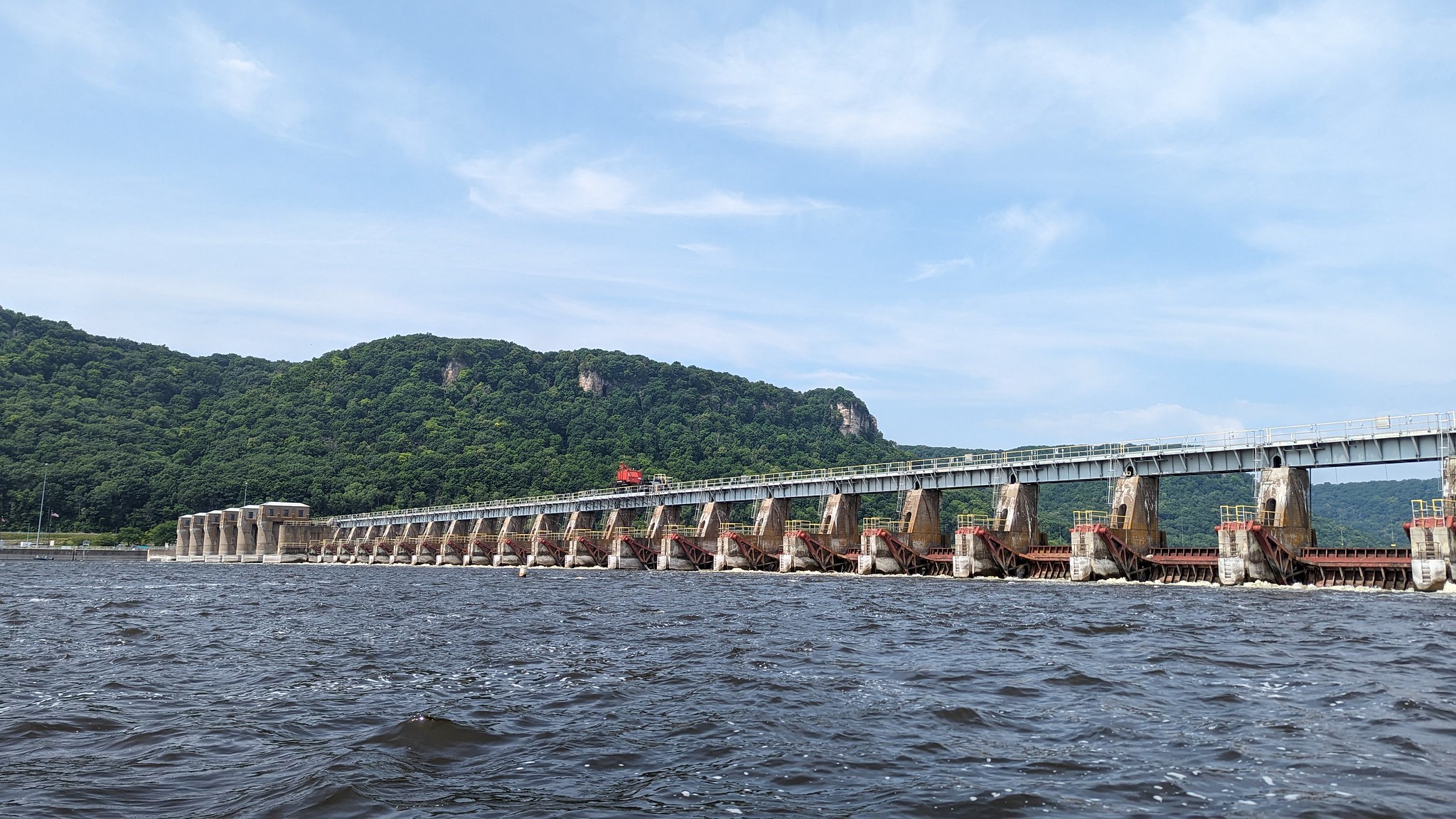
Lock and Dam 5 near Winona is tough but not impossible for fish to bypass. A bioacoustic fish fence here would make it even harder for invasive carp to get upstream.
Combined, the Lock and Dam 5 deterrent, systems and management strategy could stop 98% of invasive carp from moving upstream. That efficacy rate could be enough to protect Minnesota for many years, because one invasive carp does not a catastrophe make. Carp only spawn when their populations reach a certain density, meaning that our goal must be to keep populations very low. We don’t know exactly what that population density for reproduction is, and we can’t reliably predict when it will be reached if we fail to act.
What about native fish and other wildlife?
In addition to assessing all of these tactics for keeping carp populations to a minimum, Dr. Sorensen’s research considers native fish, as well. Native fish also struggle to swim through locks and dams to spawn. As we know, dams can be quite damaging to many fish species, including iconic river species such as paddlefish and sturgeon.
While some elements of a deterrent system are tailored specifically to repel carp, it’s important to consider whether we can improve upstream passage rates for native fish. Dr. Sorensen has suggested that a “fish elevator” could be installed at Lock and Dam 5. Gate flows could steer fish into an area where fish would be sorted. Carp could be removed, and desired fish could be lifted over the dam. This idea needs further investigation to assess its feasibility and cost, but it could actually make Lock and Dam 5 less harmful to native fish than it is now.
From research to implementation
Dr. Sorensen’s research is promising, but it’s not the end of the work. The DNR must lead on the next steps for the Lock and Dam 5 proposal, such as engineering, environmental permitting and interagency collaboration. We’re urging the DNR to use the $1.7 million in expanded invasive carp funding FMR secured at the state capitol this year to take these next steps.
Since Dr. Sorensen will retire this fall, we need other researchers and agency experts to carry on this work. In the future, we might have additional invasive carp control options. But if we don’t protect Minnesota’s waters now, we might not have any opportunity to apply new solutions in the future, or they could become much more expensive to deploy against a larger population.
Will Minnesota do everything it can to stop invasive carp in our state? We hope so, and we’re looking to our elected leaders and the DNR to act now on Dr. Sorensen’s promising research.
Become a River Guardian
Sign up and we'll email you when important river issues arise. We make it quick and easy to contact decision-makers. River Guardians are also invited to special social hours and other events about legislative and metro river corridor issues.
